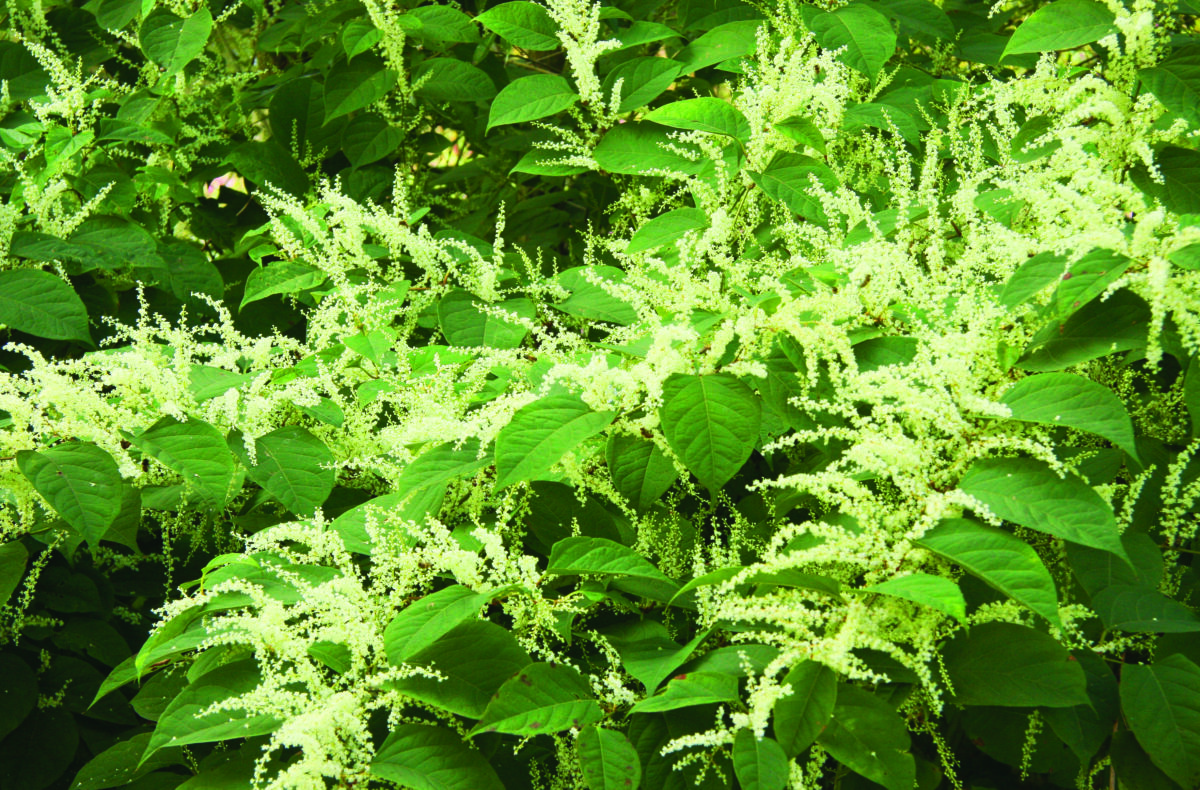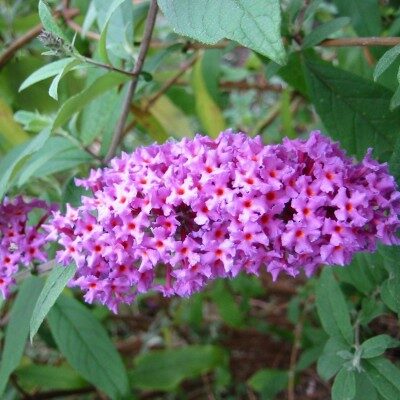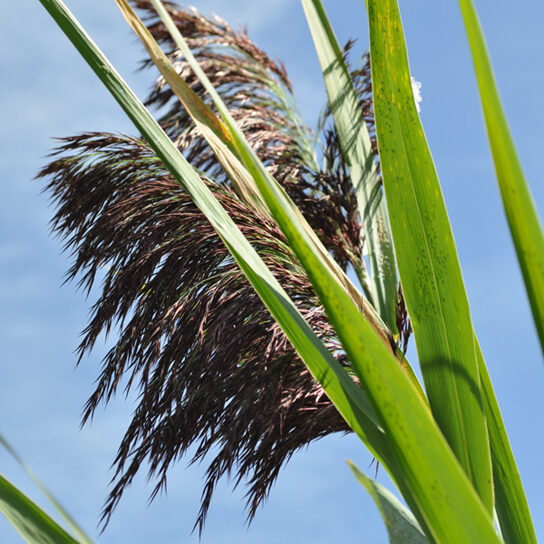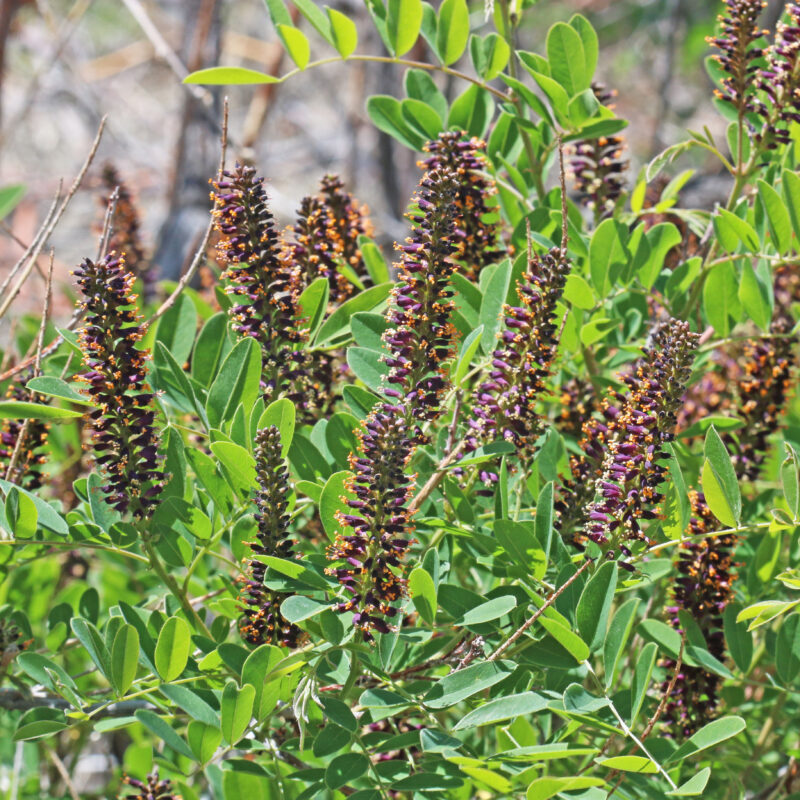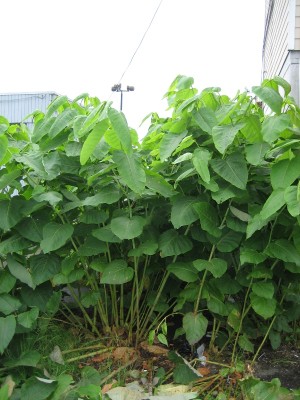
A number of species fall into the invasive knotweed category: Polygonum x bohemicum, P. cuspidatum, P. sachalinense, P. polystachyum; syn. Fallopia japonica. In the Pacific Northwest, there are three closely related species of invasive knotweed that are difficult to tell apart and share similar habitat, impacts, and control methods. This tall bamboo-like perennial has long creeping rhizomes and the stout reddish-brown stems have slightly swollen nodes. The leaves are broadly oval coming to a point, and the flowers are greenish-white to cream and grow in large plume-like clusters at the end of the stems.
These invasive plants were introduced in the U.S. as ornamental plants and grow vigorously along roadsides, waste areas, streams and ditch banks, crowding out native trees and shrubs. The best way to get rid of them is to dig them out, root and all.
Some native plant alternatives are:
- Red osier dogwood
- Native willows
- Ninebark
- Oceanspray
- Goat’s beard
Read more about knotweeds and other weeds from the 4-County Cooperative Weed Management Area’s fact sheets.
(Top photo by Maja Dumat)
